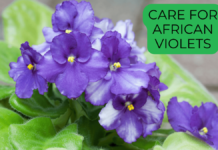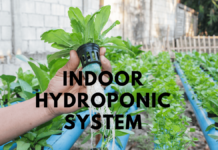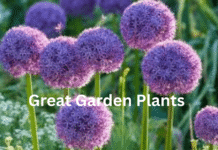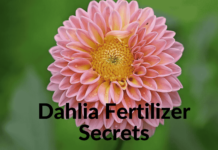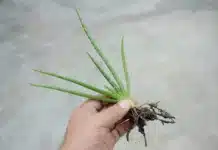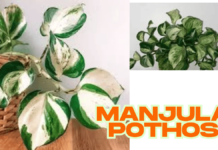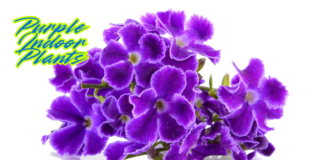African violet are beloved houseplants that brighten any space with their colorful blooms and lush green foliage. Known for their compact size and easy-care nature, they can thrive indoors with the right care. Whether you’re a seasoned plant enthusiast or a newcomer to the world of houseplants, learning how to care for African violet is essential for ensuring they grow strong, healthy, and bloom beautifully year-round. In this guide, we’ll delve into the vital aspects of African violet care, from lighting and watering to soil and temperature preferences.
Understanding African Violets

Native to tropical regions of East Africa, African violets (Saintpaulia) are hardy plants that thrive in warm, humid conditions. They are known for their vibrant flowers that can range from purple to pink, blue, and even white. These plants are often seen in homes and offices because of their low-maintenance needs and long-lasting blossoms. However, like all plants, African violets require specific care to flourish. This article will provide comprehensive guidance on everything from soil requirements to common pests that may affect them.
Light Requirements for African Violets

The first thing to consider when caring for African violets is light. These plants thrive in moderate light, but direct sunlight can be harmful. Too much direct sunlight will burn the delicate leaves, causing them to yellow and wilt. On the other hand, insufficient light will result in poor growth and few flowers.
A bright, indirect light source is ideal for African violets. Place them near windows with sheer curtains, or use grow lights designed for indoor plants to give them the light they need without the risk of sunburn. Keep in mind that African violets need about 12-14 hours of light per day to bloom properly. If you live in a region with long winters, a grow light will be particularly beneficial.
Watering African Violets

Watering is one of the most important aspects of African violet care. These plants require consistent moisture but are prone to root rot if overwatered. The key is to maintain the right balance. It’s best to water African violets from the bottom, as this helps prevent water from sitting on the leaves, which can cause them to rot.
To water properly, place the pot in a shallow tray filled with water for 10-15 minutes. Let the plant absorb the water through the drainage holes at the bottom of the pot. Afterward, discard any excess water that remains in the tray. It’s essential to ensure that the plant is not sitting in water for too long, as this can lead to waterlogged soil and root rot.
When watering, always use room temperature water. Cold water can shock the plant, and hot water can cause the roots to burn. Watering once every 5-7 days is generally sufficient, but always check the soil’s moisture level by sticking your finger about an inch into the soil. If it feels dry, it’s time to water.
Soil and Potting for African Violets

African violets prefer a light, well-draining soil mix that allows water to move freely without becoming soggy. Specially formulated African violet potting mixes are available, but if you prefer to make your own, a good mixture includes equal parts of peat moss, perlite, and vermiculite. This combination ensures that the soil is airy and retains just the right amount of moisture.
When selecting a pot, choose one with good drainage. African violets do not like to sit in stagnant water, so it’s essential to ensure that excess moisture can escape. A small, shallow pot works best for African violets, as their roots are relatively compact.
Temperature and Humidity

African violets thrive in temperatures between 65-75°F (18-24°C), making them perfect for indoor environments. These plants are sensitive to sudden temperature fluctuations, so avoid placing them near drafty windows, air conditioning units, or heating vents. Additionally, they prefer humidity levels of 50% or higher. If you live in a dry climate, you may want to use a humidity tray or a humidifier to create a more suitable environment.
Fertilizing African Violets

To encourage healthy growth and vibrant blooms, regular feeding is essential. African violets benefit from a balanced, water-soluble fertilizer that is high in phosphorus. You can use a special African violet fertilizer or any balanced fertilizer diluted to about one-quarter of the recommended strength. Fertilize every 4-6 weeks during the growing season (spring and summer) and reduce feeding in the fall and winter when the plant is dormant.
It’s important not to over-fertilize, as this can lead to leggy growth and reduced flowering. If the leaves begin to turn yellow or the plant’s growth slows, this may be a sign that it’s not getting enough nutrients.
Common Problems and Solutions
Even though African violets are relatively low-maintenance, they can still face a few challenges. Common issues include:
- Yellowing Leaves: This could indicate overwatering or inadequate light. Adjust watering habits and ensure the plant is getting enough light.
- Leggy Growth: If your African violet is growing tall with few flowers, it may be lacking light. Consider moving it to a brighter location.
- Pests: Common pests that affect African violets include aphids, mealybugs, and spider mites. If you notice any signs of pests, treat the plant with an insecticidal soap or a mild, homemade solution of water and dish soap.
Are African Violets Poisonous to Cats?

This is a common question among pet owners who are concerned about the safety of their plants. Fortunately, African violets are non-toxic to cats and other pets. Unlike some plants that can cause harm if ingested, African violets are safe to have around your furry friends. However, it’s always a good idea to keep plants out of reach of pets to avoid any potential chewing.
How to Propagate African Violets
Propagating African violets is a rewarding and relatively simple process. The best way to propagate African violets is through leaf cuttings. To do this, select a healthy, mature leaf and cut it at the base using a clean, sharp knife. Place the leaf in a glass of water, ensuring that only the base of the leaf is submerged. After a few weeks, tiny roots will begin to form. Once the roots are long enough, you can transplant the leaf cutting into a small pot with fresh African violet soil.
FAQs About African Violet Care
1. How often should I water my African violet?
Water your African violet when the top inch of soil feels dry. This is usually about once every 5-7 days, but it can vary depending on your environment.
2. Can African violets be grown in low light?
While African violets prefer moderate to bright indirect light, they can survive in low light conditions. However, they may not bloom as frequently or as vibrantly.
3. Why are my African violet leaves turning yellow?
Yellowing leaves are often a sign of overwatering, insufficient light, or a lack of nutrients. Check your watering schedule, light levels, and consider fertilizing if necessary.
4. Can I use regular potting soil for African violets?
It’s best to use a soil mix designed for African violets, as it is light and well-draining. Regular potting soil can become too heavy and lead to poor root health.
5. Are African violets safe for pets?
Yes, African violets are non-toxic to cats and other pets, making them a safe option for households with animals.
Pros and Cons of African Violets
| Pros | Cons |
|---|---|
| Non-toxic to pets | Require specific care (light, humidity) |
| Easy to propagate | Can be susceptible to pests |
| Compact size, perfect for indoor spaces | Need consistent watering practices |
| Long-lasting blooms | Sensitive to temperature changes |
Conclusion
Caring for African violets may seem like a delicate task, but with the right knowledge and attention, these beautiful plants can thrive in your home for years to come. By providing the correct light, water, soil, and temperature, you will enjoy their vibrant flowers season after season. Additionally, with proper care, African violets can easily be propagated, allowing you to grow even more of these charming plants.
Whether you’re a plant enthusiast or just beginning your gardening journey, African violets are a fantastic choice. Their beauty, ease of care, and pet-friendly nature make them a perfect addition to any home. With the information provided in this guide, you’re now ready to ensure your African violets receive the care they deserve.



